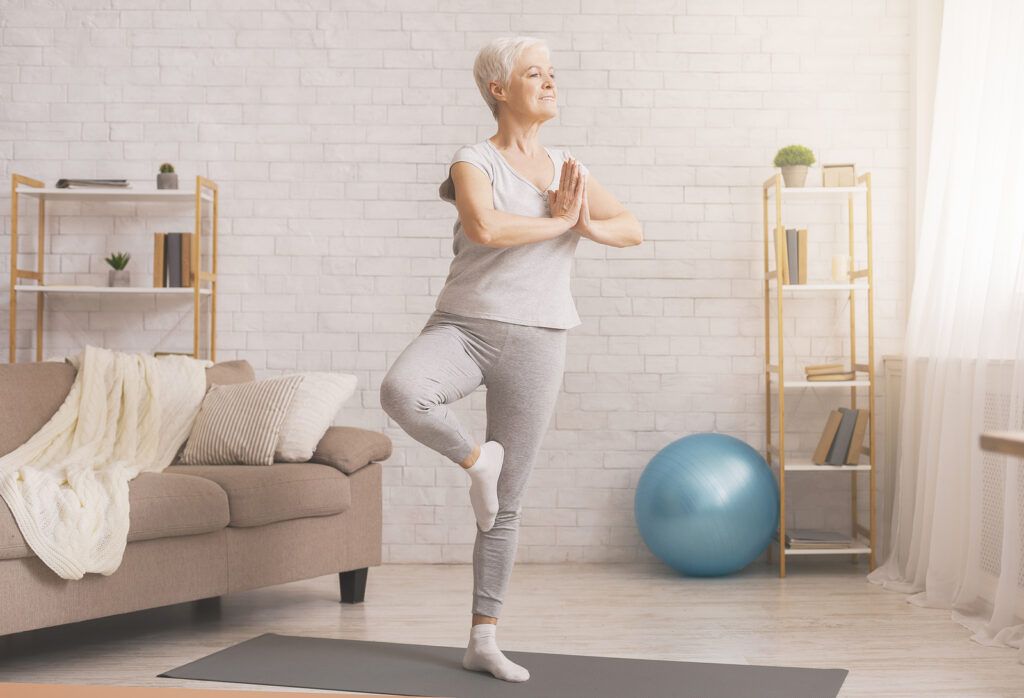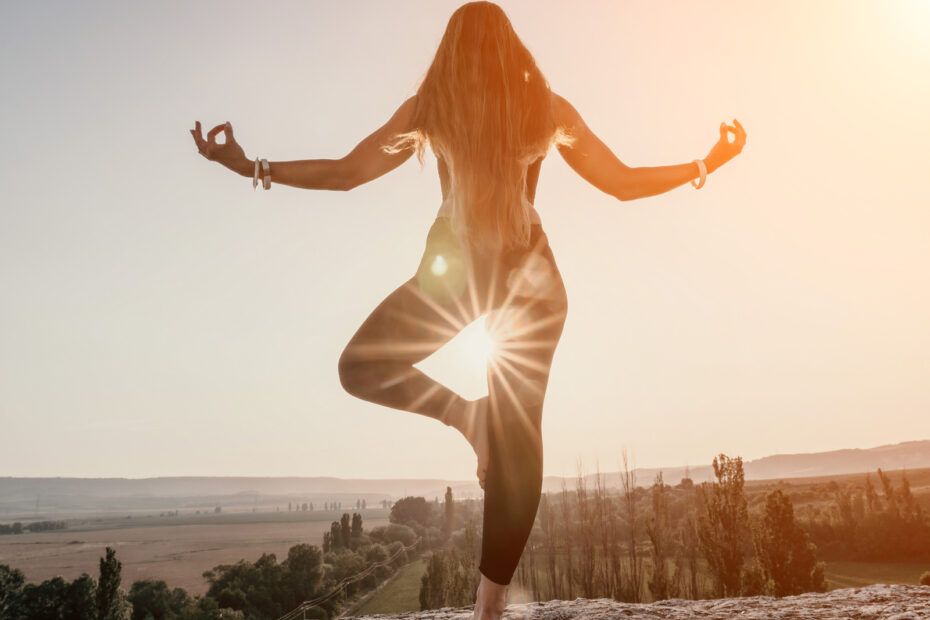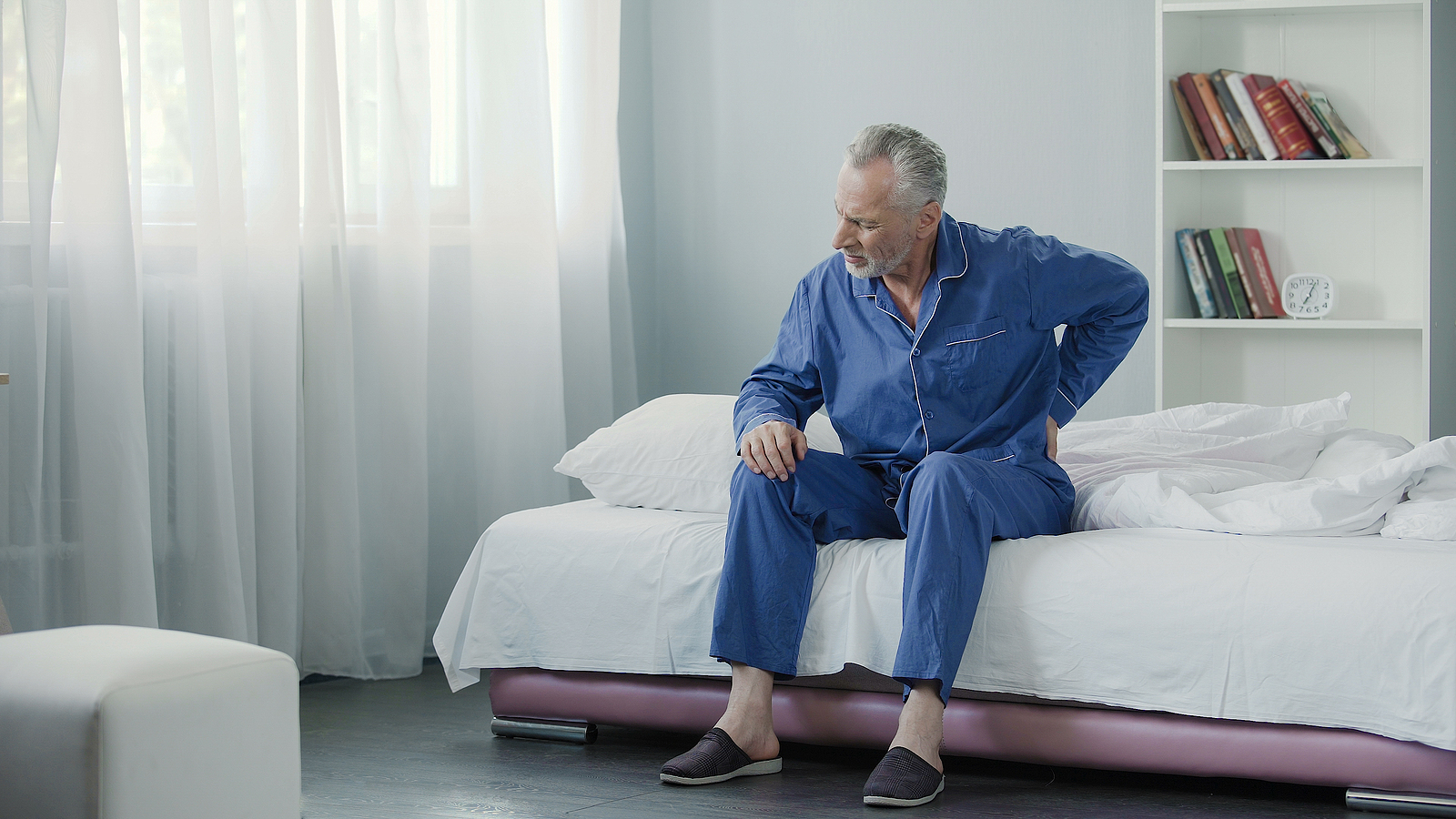Maintaining good balance becomes increasingly important as we age, especially when it comes to preventing falls and preserving independence.
And unfortunately, many seniors experience a decline in balance due to natural aging processes, reduced physical activity, health conditions, or some combination of these issues.
Which can make everyday tasks more challenging and increase the risk of falls.
Fortunately, there’s good news – balance can be improved at any age with consistent practice and the right exercises.
It’s true, there are simple exercises that seniors can do at home to enhance their stability and confidence.
In this guide, we’ll go over some great balance exercises that require minimal equipment and that can be tailored to individual abilities, making them accessible to everyone.
But first things first…
Why Balance Exercises Matter
Falls are one of the leading causes of injury among older adults.
Actually, according to the CDC, falls are the leading cause of injury for folks aged 65 years and over.
Specifically, 1 in 4 (or over 14 million) seniors report falling each year – that’s a lot of falls.
As a home health physical therapist, this hits home for me because I work with seniors every day and improving balance is often one of our primary goals.
Falls can occur for all kinds of reasons, but I’ll tell you that from my experience, a lot of ’em are preventable.
Avoiding unsafe behaviors and using the proper equipment can go a long way, but improving standing balance can be paramount as well.
And fortunately, balance can improve with exercise!
I tell my patients that improving balance is just like strengthening a muscle – it tends to take a little longer, but working on balance exercises consistently can most certainly improve balance.
It’s all about doing the right kind of exercises and doing them often enough to see the results.
But staying safe is always the first priority, so let’s start with a few safety precautions to make sure we’re all staying safe with our workouts.
Safety First
The exercises mentioned in this guide are low-impact and don’t require a ton of moving, making them safe for most seniors out there.
That said, if you have any doubts, it’s always a good idea to consult your healthcare provider to ensure the activities are appropriate for your fitness level.
I should also mention that balance exercises can be a little scary because in order to improve balance, we have to put ourselves in situations where our balance is challenged.
In other words, that means putting ourselves in situations where we could fall.
This means doing balance exercises comes with a little risk, but there are things we can do to keep that level of risk as low as possible.
This includes performing these exercises in the safest places possible, as well as having a spotter when necessary.
Best Places to Perform Balance Exercises
Choosing the right location to perform balance exercises can significantly enhance safety and effectiveness.
Consider the following options:
- In Front of a Kitchen Counter: The sturdy surface provides reliable support if you need to steady yourself.
- In a Corner: Performing exercises in a corner gives you two walls for added stability and confidence.
- Near a Sturdy Chair or Dresser: Chairs or heavy dressers can offer support when needed during exercises.
- On a Non-Slip Surface: Ensure the floor is free of rugs or other obstacles that could cause tripping.
- Well-Lit Area: Good lighting reduces the risk of missteps and helps you maintain focus on your movements.
When working with patients, my personal favorite spot is in front of the kitchen sink (with me spotting behind the patient).
The sink offers a stable place to grab in case of loss of balance, but anywhere along a kitchen counter will work very well too.
And for homes that have a kitchen counter corner, this is another great spot to exercise because you have support on 2 sides (you could even put your back to the corner and place a sturdy chair in front of you for support on all sides).
And if you’re not confident in your ability to perform these exercises please have a caregiver spot you when performing.

10 Easy Balance Exercises for Seniors
I should point out that the use of “easy” above may be a little misleading.
“Easy” is a subjective term and while these exercise may be easy for some seniors, they will be far from it for others – it all depends on your level of balance and overall fitness level.
What “easy” really means here is that these exercises are straightforward, don’t really require any equipment, and can be done just about anywhere.
I also want to point out that I’ve listed these exercises in order of increasing difficulty (starting with the easier static exercises and progressing to more challenging, dynamic exercises).
Depending on your skill level, I suggest starting at the beginning and progressing down the list as you feel comfortable.
1. Static Stance Unsupported
- How to do it:
- Stand tall with your feet together, arms crossed in front of your body.
- Keep your eyes open and try to maintain and upright posture without touching anything.
- Start by holding for 30 seconds and try to progress to holding for 2 minutes.
- Benefits: Improves static balance and the ability to stand unsupported while performing daily tasks.
FYI, “static” in this case means standing still or not moving; this is opposed to a “dynamic” balance exercise in which something is moving (which we’ll get to shortly).
Helpful tip: you can make this exercise harder by changing your foot placement – bringing your feet closer together or in tandem (heel-toe) makes it harder; bringing your feet farther apart makes it easier.
2. Static Stance with Head Nods
This exercise takes the exercise above and steps it up a notch by adding head movement.
- How to do it:
- Stand tall with your feet together, arms crossed in front of your body (or down by your side)
- Slowly look up toward the ceiling, hold for a second, and then look down toward the floor.
- Try to look up/down 10x while maintaining your balance.
- Benefits: Improves standing balance while getting your vestibular system more involved.
3. Static Stance with Head Turns
Personally, I find performing head turns while unsupported more challenging than head nods, but a lot of my patients disagree.
Try both and see which variation is more challenging.
- How to do it:
- Stand tall with your feet together, arms crossed in front of your body (or down by your side)
- Slowly look over your right shoulder, hold for a second, and then turn and look back over your left shoulder.
- Try to look side to side 10x while maintaining your balance.
- Benefits: Improves standing balance while getting your vestibular system more involved.
Helpful tip: the faster you turn your head from side to side, the harder this exercise becomes.
4. Static Stance Eyes Closed
- How to do it:
- Stand tall with your feet together, arms crossed in front of your body.
- Once you feel stable, close your eyes.
- Try to maintain your balance with your eyes closed for 30 seconds.
- Benefits: Improves standing balance in poorly-lit environments, improves ability to stand with eyes closed while in shower.
Helpful tip: the closer your feet are together, the harder this exercise gets. If you can’t make it to 30 seconds, try bringing your feet a little farther apart and gradually bring ’em in closer as you get better at it.
5. Unsupported Weight Shifts (Anterior/Posterior)
With this exercise, we move away from the purely static balance exercises and start trying our luck with some dynamic exercises.
- How to do it:
- Stand with your feet shoulder-width apart, arms down by your side.
- Without moving your feet, slowly shift your weight forward toward the balls of your feet, as if you’re leaning forward.
- Hold for a second and then shift your weight back toward your heels, as if you’re leaning backward.
- Continue shifting your weight forward/backward 10x each direction without touching anything.
- Benefits: Improves righting reactions, improves ankle strength/mobility, improves functional standing balance.
Helpful tip: you can also perform lateral weight shifts by shifting your weight from one leg to the other (side to side), without completely taking either leg off the floor. Lateral weight shifts tend to be quite a bit easier though.
6. Standing Trunk Rotations
- How to do it:
- Stand with your feet shoulder-width apart, arms extended out in front (holding hands).
- Slowly rotate your body to your left side, hold for a second, and then turn back to your left side.
- Continue rotating side to side while maintaining your balance.
- Try to complete 10 turns to each side.
- Benefits: Improves core strength, stimulates your vestibular system, improves functional standing balance.
Helpful tip: you can make this exercise more challenging (and stimulate your vestibular system even more) by turning your head as you rotate your trunk to each side.
7. Marching in Place
- How to do it:
- Stand beside your counter or support so that one hand can easily touch it for assistance as needed.
- Stand tall and lift one knee up as high as comfortable and then lower it.
- Repeat on the other leg.
- Continue alternating sides, while trying to maintain balance without touching anything.
- Complete 10 – 15 reps per leg.
- Benefits: Enhances dynamic balance, improves single limb stance, improves hip strength, and helps promote better balance while walking.
The goal for this exercise is control – you don’t want to be wobbling all over the place or stumbling around while marching.
If you can’t stand in one spot and march without support, place one hand on the counter and perform with support until balance improves.
8. 3-Way Stepping
This is a personal favorite of mine, I have a lot of my balance patients perform it in one variation or another.
- How to do it:
- Stand beside your counter or support so that you can easily grab a hold for support if necessary.
- Start by taking one normal step forward with your right leg and then return to your starting position (left leg didn’t move).
- Repeat by taking a normal step forward with your left leg, while your right leg remains stationary.
- Continue alternating with each leg, attempting to complete 10 steps on each side without touching anything.
- After finishing the ‘forward step’ for each leg, rest as needed and repeat – but this time, step backward for each step instead of forward (still aiming for 10 steps on each side).
- After finishing the ‘backward step’ for each leg, turn and face your counter.
- While standing unsupported, take one side step to the right, pause, and then return to the starting position.
- Take a side step to the left, pause, and return to starting position.
- Repeat for 10 side steps to each side.
- Benefits: Boosts dynamic balance, improves coordination, strengthens hips, promotes better balance while walking.
Ok, I hope those instructions make sense.
Essentially, you’re just taking one step at a time for each leg while not holding onto anything – and then repeating for the back and side directions.
You can also think of this exercise as forward, backward, and side lunges without the knee bend.
9. Toe Taps on Step
For this exercise, you need a single step or staircase, but you could use a solid box or anything else of appropriate height as well.
Just keep in mind, the higher the step, the harder this exercise will be.
- How to do it:
- Stand in front of your step/stair, feet shoulder-width apart.
- While controlling your balance, lift one foot up and touch the top of the step and then return that foot back to the ground.
- Repeat on the other side.
- Continue alternating sides, tapping the stair with each foot back and forth.
- Perform 10 – 15 reps for each foot.
- Benefits: Boosts dynamic balance, improves coordination, strengthens hips, promotes better balance while walking.
This exercise is harder than it sounds, so feel free to grab the handrail with one hand for support if necessary and try to progress to performing without any support.
10. Single Leg Stance
- How to do it:
- Stand within easy reach of your counter/support surface, feet shoulder-width apart.
- Without touching anything, raise one foot off the ground and try to hold as long as possible.
- Repeat on the other side.
- Aim for 30 seconds or more for each leg.
- Benefits: Improves single leg stance time, strengthens hips, promotes better balance while walking and going up/down curbs.
Additional Tips for Success
Consistency is Key
Aim to perform these exercises at least 3-4x per week.
The more regularly you practice, the more noticeable your improvements will be over time.
Depending on your skill level, some seniors may want to perform these exercises daily to maintain current balance levels as well.
Progress Gradually
Start with shorter durations or fewer repetitions, and gradually increase as your balance improves.
This prevents overexertion and ensures steady progress.
I also want to stress that you don’t have to do all the exercises listed above – the key is to find a few exercises that challenge your balance and perform these consistently.
Again, I would start at the beginning and see how many you can easily perform and when they start becoming challenging, this is likely where you should start.
After all, if a balance exercise is too easy, it isn’t going to help improve your balance.
Listen to Your Body
Pay attention to how your body feels during exercises.
If you experience pain, discomfort, or fatigue, stop and rest. Modify exercises as needed to suit your abilities.
Incorporate Variety
Mix up your routine by including different exercises to keep it engaging and to help keep it from getting too boring.
Variety is the spice of life, so feel free to mix and match the above exercises as you see fit.
It’s also a good idea to include strengthening exercises into your routine because having stronger legs can also reduce your fall risk.
Use Support When Needed
I can’t say this enough – don’t hesitate to use a chair, countertop, or wall for support while performing these exercises!
It’s ok to use support, especially when starting off.
And some of these exercise may still be challenging even if you’re holding on to something.
As your balance improves, you may be able to progress to performing them unsupported.
Also, please use a spotter too if necessary – the last thing we want is a fall while working on balance exercises.
Final Thoughts
Alright, that’ll about do it.
There are a ton of different exercises you can use to improve balance, but the ones I listed here are my personal favorites that I use daily with my senior patients.
And I can tell you from experience that they work.
But again, it’s all about putting the work in and being consistent because improving balance does take time.
But the payoff is definitely worth it.
Anyway, I hope you found this guide helpful and if you have any questions of comments, please leave ’em below and I’ll get back to you shortly.




I needed balance exercise for a weight management support group. Hope this information is helpful.
Yeah, I hope you found this article helpful, thanks for reading.